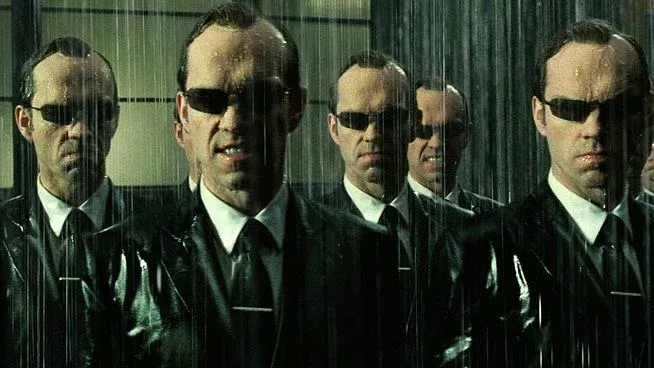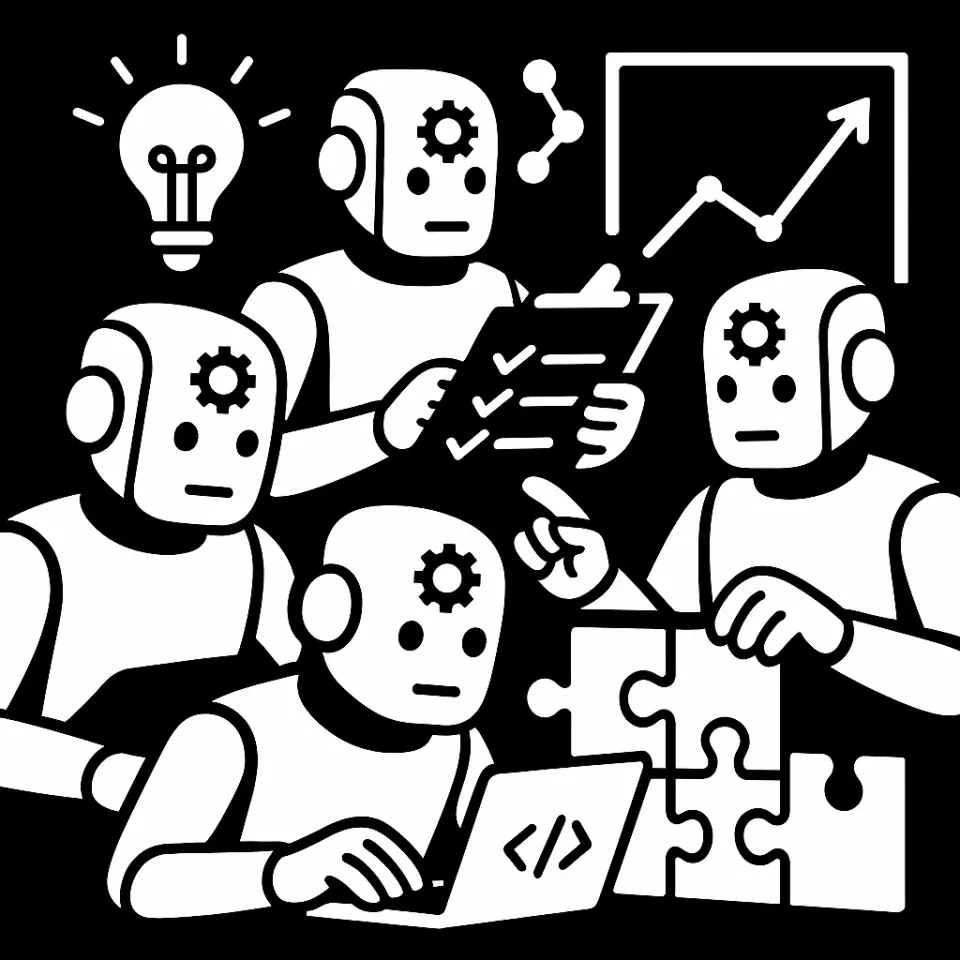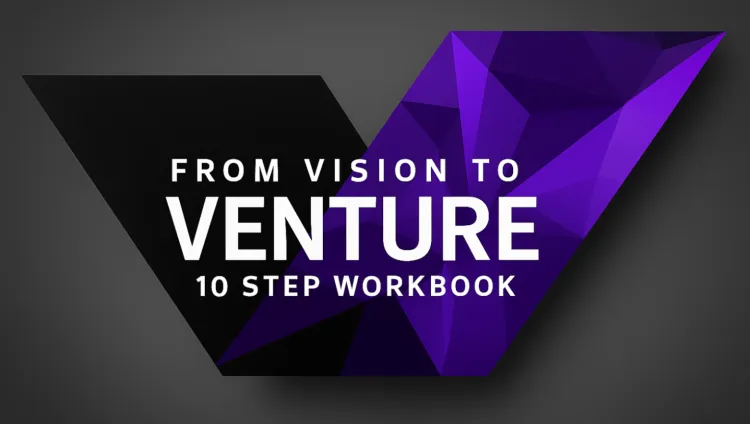I learned about AI agent fundamentals for you. So here's my core summary to save you weeks and hours of learning about agents. Believe it or not, one of the most difficult things from this deep dive was the actual definition of an AI agent. So, if you were ever confused, you are not alone!

Next Decade's Skill Gap
Here's the brutal reality: Research from McKinsey shows that 73% of businesses plan to adopt AI for competitive advantage within 12 months, but only 12% of professionals know how to build scalable AI workflows. That huge gap represents the difference between being replaced by AI and becoming irreplaceable through AI. The gap isn't your prompting skills. The gap is that you're thinking like an AI user instead of an AI architect. The best part is that, you and I can become–AI architects, too. (And totally without code, which is crazy!)
I think we're going to live in a world where there are going to be hundreds of millions and billions of different AI agents, eventually, probably more AI agents than there are people in the world. A lot of what we're focused on is giving every creator and every small business. The ability to create AI agents for themselves, making it so that every person on our platforms can create their own AI agents that they want to interact with. – Mark Zuckerberg
Reactive Vs. Proactive AI
Reactive AI: You provide input → AI provides output → You decide what to do next. A LINEAR path.
Proactive AI Agents: You provide a goal → AI reasons, plans, acts, and iterates → AI achieves the goal. A CIRCULAR path.
When the AI agent becomes truly autonomous: You set the goal, and the AI agent figures out how to get there. It takes action, checks the results, learns from what happened, and keeps refining until it nails exactly what you asked for.
What If AI Could Do Your Work – While You Sleep?
Let's begin by looking at what definitely is not an AI agent. One-shot prompting is what I have been doing all along, and what 90% of AI users do daily–writing a prompt into Large Language Models (LLMs) like ChatGPT, Claude, Grok etc.–to receive an output that boosts instant understanding. You're treating AI like a sophisticated search engine instead of an autonomous capability multiplier. You ask questions, get answers, and move on. This is what I call The Manual Trap.
The Manual Trap–that's keeping you small. You're not scaling. You're just doing individual tasks faster.
Smart Entrepreneurs Are Building AI Agents
An AI agent has four core components–the TGMT Framework:
Task. Goals. Model. Tools. It needs to have a specific task, clear goals-what it's supposed to give you as the outcome, the model itself (think: ChatGPT), and tools that it has access to such as email accounts, calendars, databases, APIs... to name a few.
A simple example,
Inbox Zero AI Agent
Task: Clear your inbox to zero unread emails every day.
Goals: Zero unread emails with important messages flagged for your review.
Model: Claude Sonnet 4
Tools: Gmail, Google Calendar, Google Contacts
The Magic: the Agent reads all incoming emails, auto-deletes spam/newsletters, schedules meetings from requests, sends basic replies ("Got it, will review by Friday"), and flags only the 3-5 emails that actually need your personal attention. You check your email only once and deal with what matters.
It is pretty much your own secretary or virtual assistant that never sleeps, never takes vacation, and gets smarter every day. This is a complete game-changer for solopreneurs or entrepreneurs–what an amazing time to be alive and build your own business! If not now, when?
Multi-Agent Workflows or Crew AI
Instead of just having a single AI agent doing a certain thing, you actually want to prompt many agents to have different roles. So, the question you might have is: why can't I just have one AI and tell it to do everything, right? Research shows by having a multi-agent workflow, the results of the final product is generally higher. A team of experts tends to deliver better results, than only one trying to handle everything alone. So what goes for humans applies to agents, too.
During the recent Grok 4 launch livestream, Elon Musk discussed the concept of multiple AI agents collaborating to tackle complex problems, specifically referencing the "Grok 4 Heavy" version.
Grok 4 Heavy works as a group of agents. Like a study group comparing results and choosing the best one. – Elon Musk
Building Your Digital Team
To give you a fast crash course on multi-agent design structures: an agent can also be working with other agents on a shared goal while having its own tasks. And if you have more than one agent, then you have a crew, hence the name–Crew AI. You are literally building your digital team to carry out your goals or business targets. There are roughly 3 big multi-agent design structures that one can begin to understand–sequential, hierarchical, and parallel.
Sequential Structure (The Assembly Line)
This is the simplest when you just have one agent do something and then it passes it on to another agent that does something else and another agent that does something else. A very horizontal structure.
For example,
Agent 1: extracts text from scanned documents, then passes it on to
Agent 2: who summarizes the text, then passes it on to
Agent 3: who finally saves the data into a database.
Hierarchical Structure (The Manager)
We have a leader or manager agent that supervises multiple sub-agents that have their own specific tasks. These sub-agents would complete their task and report their results back to the manager agent who then compiles all together and puts it into a professional report. Pretty clear, right?
Parallel Structure (The Task Force)
This is when you have agents working on different tasks independently. Agents will be handling different parts of a task simultaneously, often to speed up processing.
For example,
Agent 1: analyzes market data
Agent 2: researches competitors
Agent 3: tracks social sentiment
merging everything into a comprehensive market report.
The different configurations of agents working together, hybrid systems and the tools that they can use are endless. This is where it gets exponentially powerful. Of course, when you start adding multi-agents, the complexity naturally grows and it becomes really interesting to understand how the agents are interacting with each other. But not so different from the "old way" let's say, of building up a team or company with people–the bigger the team, the greater the complexities to manage it effectively.
By the way, if you're interested in leveling up your prompt engineering skills, my Co-Founder–Mo did a video where he distilled down Google's nine-hour prompt engineering course into just 10 minutes. So, check it out and get started today with the TCREI formula. Your prompts are sharper than 90% of AI users. You're getting better outputs, faster insights, and more precise results.

As we see here, AI agents and agentic workflows, just like any other AI tool, has a large component of prompting fundamentals. It just shows that prompt engineering really is one of the highest ROI skills that you can learn these days.
What's your first AI agent going to be? What's your biggest time drain right now? Stay tuned for a step-by-step example where we will build an AI agent together.





